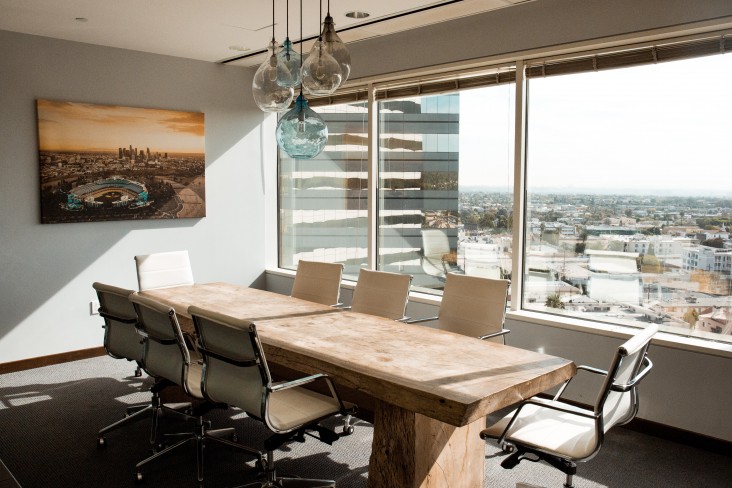In December 2020, a commercial landlord and their tenant found themselves in the High Court arguing about who was responsible for replacing fixtures and fittings because their lease was silent on the issue.[1] These types of disputes around fixtures and fittings in commercial leases are quite common.
For both landlords and tenants negotiating a commercial lease, it is always best to turn your mind to your intentions for any fixtures and fittings attached to the premises; this will help enormously in avoiding costly disputes later on.
Issues to think about
Which items are the landlord’s fixtures and fittings? Will a tenant’s fixtures and fittings be added to the premises?
A lease may allow the tenant to make various alterations to the premises to ensure the fit-out meets its business needs. Whether certain fixtures or fittings belong to the landlord or the tenant often affects the rights and responsibilities around those items. It is critical that a clear schedule of landlord’s fixtures and fittings (and the condition of those items) is included in the lease.
Who is responsible for maintaining and repairing the fixtures and fittings?
Under some leases, the landlord’s fixtures and fittings are defined as being part of the premises. This means that the tenant’s obligations around maintenance and repair of the premises include the maintenance and repair of fixtures and fittings. However, this is not always the case and you should make sure that the lease otherwise addresses who holds these obligations.
Who is responsible for replacing broken or worn out fixtures and fittings?
In the Ventura case, the lease was silent about who was responsible for replacing fixtures and fittings during the lease. The High Court determined that, on the wording of the lease, Ventura could decide whether to replace any fixtures and fittings if required for its business and either remove or allow its landlord to purchase these items at the end of its lease.
If it is intended that either the tenant or landlord must replace any fixtures and fittings where necessary, this should be clearly expressed in the lease.
What happens with the tenant’s fixtures at the end of the lease?
Ordinarily, fixtures are considered to be part of the building, and ownership will pass to the landlord at the end of the lease (subject to any requirements that the tenant reinstate the premises to their original condition).
However, if a lease does not specify otherwise, the default rules in section 266 of the Property Law Act 2007 allow a tenant to remove their trade, ornamental or agricultural fixtures at the end of the lease. These fixtures can be removed before, or a reasonable time after, the end of the lease as long as there is minimal removal damage and the tenant repairs (or compensates the landlord for) that damage.
Commercial landlords should make sure their leases provide specific direction on a tenant’s fixtures if, for example:
- The removal of the fixtures and repair of any damage must occur before the end of the lease or within a set timeframe following the end of the lease to avoid, for example, the landlord being unable to re-let the premises while the reinstatement is still ongoing, or
- The tenant is required to leave certain fixtures in place and transfer ownership to the landlord at the end of the lease.
Lease assignment
When a tenant assigns the lease, a new tenant may want to change which of the previous tenant’s fixtures they will need to remove at the end of the lease. If this is not done, you may be able to require the new tenant to meet the cost of removing all tenants' fixtures and fittings – even those installed by the previous tenant. Before agreeing to reduce the new tenant’s responsibilities, you will need to consider carefully how you want the premises to be left at the end of the lease and who should bear the cost of removing any unwanted fixtures and fittings.
Replacing an expired lease
When replacing an expired lease, both landlords and tenants should ensure that the records of the tenant’s fixtures are up-to-date and included in the new lease. Otherwise, there could be a dispute about whether those fixtures became the landlord’s property at the end of the expired lease.
Take care
The points in this article are just some of the matters to consider around fixtures and fittings in a commercial lease. If you are entering into a commercial lease, we can advise you in more detail and tailor your lease’s terms to match your intentions for the fixtures and fittings in the property.
[1] Ventura Ltd v Robinson [2021] NZHC 932.
DISCLAIMER: All the information published in Property Speaking is true and accurate to the best of the authors’ knowledge. It should not be a substitute for legal advice. No liability is assumed by the authors or publisher for losses suffered by any person or organisation relying directly or indirectly on this article. Views expressed are those of individual authors, and do not necessarily reflect the view of this firm. Articles appearing in Property Speaking may be reproduced with prior approval from the editor and credit given to the source. Copyright, NZ LAW Limited, 2020. Editor: Adrienne Olsen. E-mail: adrienne@adroite.co.nz. Ph: 029 286 3650 or 04 496 5513.
Aspiring Law is proud to be a member of NZ LAW Limited, an association of 53 law practices working together to proactively share ideas and expertise for the benefit of our clients.
